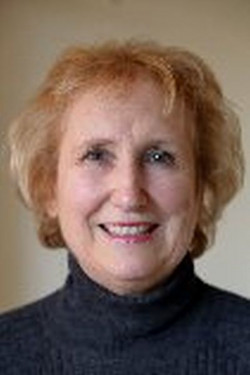
Alenka Lawrence
It was soon after Slovenia’s independence and I was in Ljubljana, making a radio programme for the BBC on “Slovenia - Setting up a New Country” – everything from designing the flag to working out the political system. More exactly, I was in the Presidential Palace, waiting, rather nervously, for an interview with then President Milan Kucan. The reason I was nervous was that he wanted to do the interview in Slovene and I’d have to explain that, although I’d spoken the language at home with my parents – Slovene emigres who lived in London , I had never learned the polite form. I would have to address Mr President as “ti”, not “vi”. How would he react? Would I be thrown out of the interview, or even the country? As he approached and genially shook my hand, I gulped and did my best to explain. I needn’t have worried. He thought it was hilarious - this British journalist who spoke Slovene more-or-less without an accent but clearly had no manners. We ended up both laughing about it together.
Such are the problems of second-generation Slovenes abroad. But I always felt close to the gallant little country I’d visited many times and heard so much about from my parents. During the struggle for independence, we joined demonstrators in London, wearing T-shirts that said “Free Slovenija Now!” It was a fantastic atmosphere – for the first time, disparate groups of London Slovenes – the old refugees, the journalists, the business travellers, the diplomats, the au pairs, who had never associated much with each other, all came together and suddenly realised they had something in common, that transcended their differences – their love for Slovenia. At one point, a Kurd joined us in solidarity. “Do you think that’s OK?” someone asked. “Of course! We’ll take all the support we can get!” said my mother. We had organised so hastily that no one at the demonstration had a Slovene flag. In the end, an elderly man remembered, “the Slovene priest’s got one!” and rushed off in a taxi to get hold of the dusty old pre-war flag, which came into its own again.
A year after Independence, my parents hosted a party at their home in England, “Happy First Birthday Slovenia” ; the first Slovene Ambassador to the Court of St James, Matjaž Šinkovec, was the guest of honour, joined by British journalists, politicians and friends who had supported Slovene independence.
In 1999 I went to Slovenia to report for the BBC again, travelling with the late Pope John Paul II on his plane to Maribor for the beatification of Bishop Anton Martin Slomšek. En route, I talked to one of the Pope’s advisers and was impressed by how aware the Pope was of the complications of Slovenia’s political history and how sensitively he had planned his speech.
Subsequently I married an American and came to live in the United States. We went to Bled for our honeymoon. We live in rural western New York and, incredibly, our farmer neighbours around the corner happen to be a Slovene family. They give us potica every Christmas and Easter and we’ll both be flying the Slovene flag along with the American one on Slovenia’s Independence Day.
Alenka Lawrence is a writer and blogger, living in Allegany, NY
